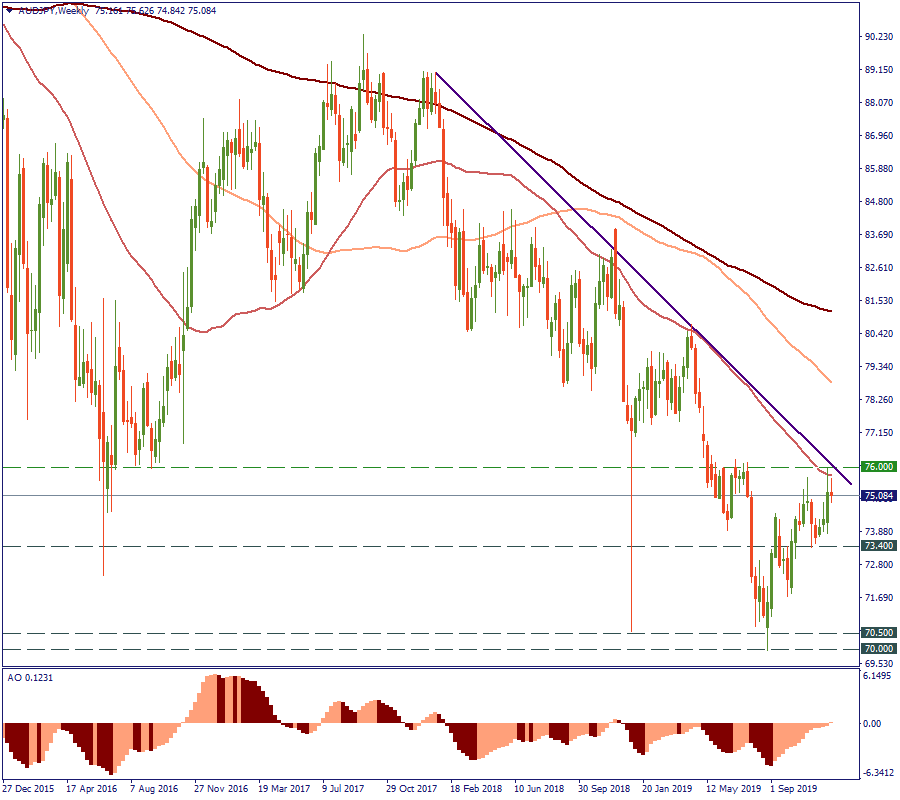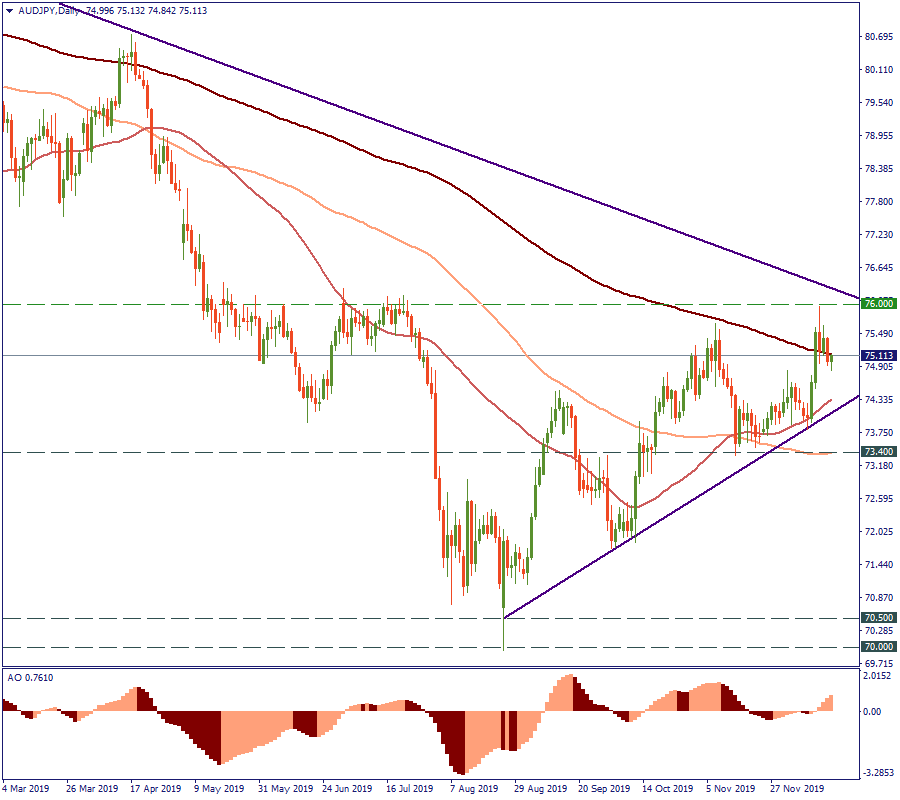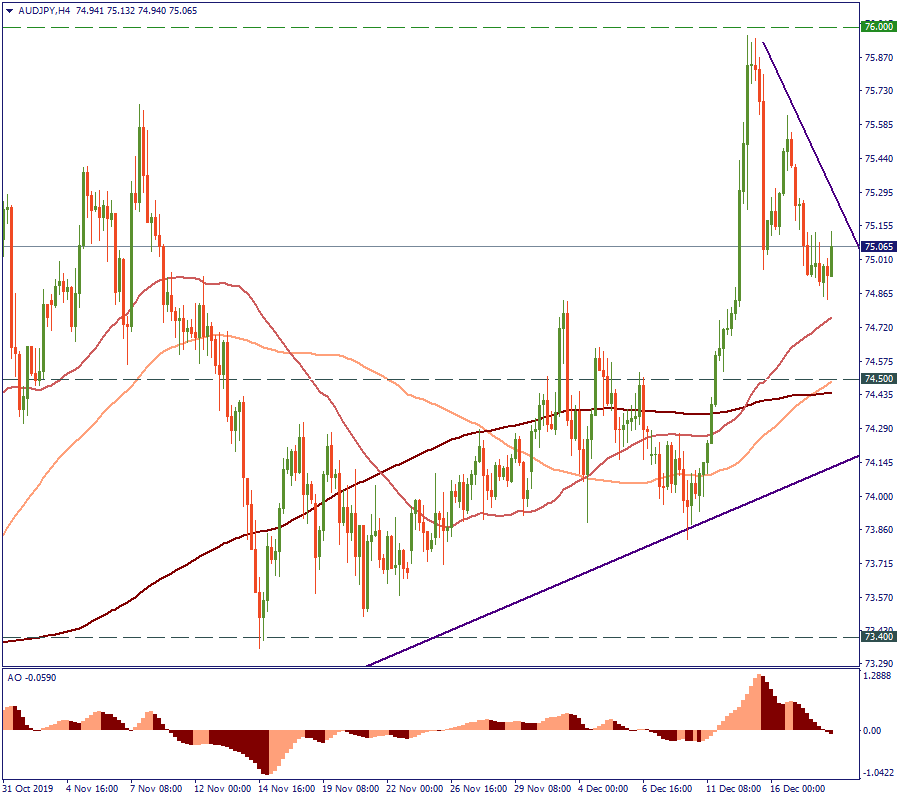
I know we've had quite an amazing run these past few month, with over 78% accuracy in our trade ideas and sentiments, and thousands of pips in profits monthly...

Don’t waste your time – keep track of how NFP affects the US dollar!
Data Collection Notice
We maintain a record of your data to run this website. By clicking the button, you agree to our Privacy Policy.

Beginner Forex Book
Your ultimate guide through the world of trading.
Check Your Inbox!
In our email, you will find the Forex 101 book. Just tap the button to get it!
Risk warning: ᏟᖴᎠs are complex instruments and come with a high risk of losing money rapidly due to leverage.
71.43% of retail investor accounts lose money when trading ᏟᖴᎠs with this provider.
You should consider whether you understand how ᏟᖴᎠs work and whether you can afford to take the high risk of losing your money.
Information is not investment advice
From the very beginning of 2018, the overall direction of AUD/JPY was a decline. On the weekly chart, this downtrend is visible, with the 50-week Moving Average serving as the resistance. Since then, the price has tested that resistance two times. Now, we are observing the third time. Therefore, the question is: will it be just another such time or a start of the long-term trend change.

Recently, the price came close to the resistance level of 76.00, which is a 6-months high. On the daily chart, it did the same in November but then dropped. Now, as it is testing the 200-day Moving Average being already above the 50-day and 100-day MAs, it is likely to go into consolidation at the present level.
In fact, we are observing a collision of the 2-years downtrend and the 6-months uptrend. For this reason, whatever the outcome, climbing further up will be difficult, and the price will have to fight its way to actually break through the 200-day Moving Average and the resistance level of 76.00. If it does, we will see a new large trend emerging.

In the course of the abovementioned mid-term consolidation, the price is likely to drop to the area of 74.50. That is approximately where the local 1-week downtrend will cross the 6-months uptrend and the 200-period and 100-period MAs. If the price drops below the mentioned Moving Averages, it should be for a relatively short period of time.
The local downtrend is also confirmed by the reading of the Awesome Oscillator, which just crossed the zero-line downwards after two descending consecutive peaks.

In the short-term, the price shows signs of continuing the downward trend. In the mid-term, we are likely to see consolidation. In the long-term – we have to wait to see the overall trend being broken or continued further.
To understand the factors behind the AUD/JPY price movements, read the news and examine the fundamentals for this currency pair.

I know we've had quite an amazing run these past few month, with over 78% accuracy in our trade ideas and sentiments, and thousands of pips in profits monthly...

Futures for Canada's main stock index rose on Monday, following positive global markets and gains in crude oil prices. First Citizens BancShares Inc's announcement of purchasing the loans and deposits of failed Silicon Valley Bank also boosted investor confidence in the global financial system...

Investor confidence in the global financial system has been shaken by the collapse of Silicon Valley Bank and Credit Suisse. As a result, many are turning to bearer assets, such as gold and bitcoin, to store value outside of the system without...

eurusd-is-falling-what-to-expect-from-the-future-price-movement

Greetings, fellow forex traders! Exciting news for those with an eye on the Australian market - the upcoming interest rate decision could be good news for Aussies looking to refinance or take out new loans. The Mortgage and Finance Association Australia CEO, Anja Pannek, has...

Hold onto your hats, folks! The Japanese yen took a nosedive after the Bank of Japan (BOJ) left its ultra-loose policy settings unchanged, including its closely watched yield curve control (YCC) policy. But wait, there's more! The BOJ also removed its forward guidance, which had previously pledged to keep interest rates at current or lower levels. So, what's the scoop? Market expectations had been subdued going into the meeting, but some were still hoping for tweaks to the forward guidance to prepare for an eventual exit from the bank's massive stimulus
Your request is accepted.
We will call you at the time interval that you chose
Next callback request for this phone number will be available in 00:30:00
If you have an urgent issue please contact us via
Live chat
Internal error. Please try again later